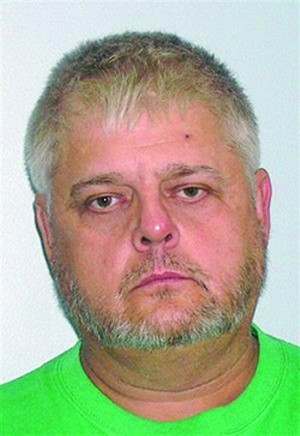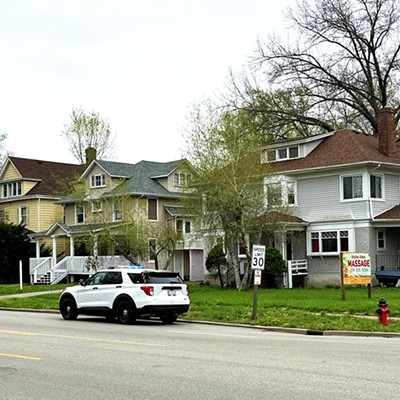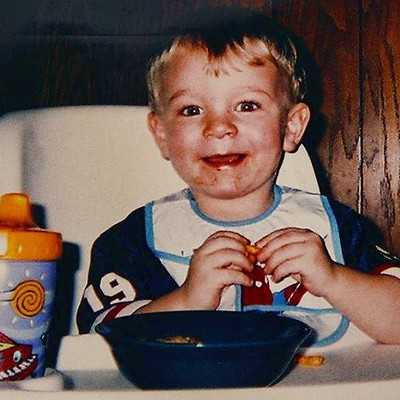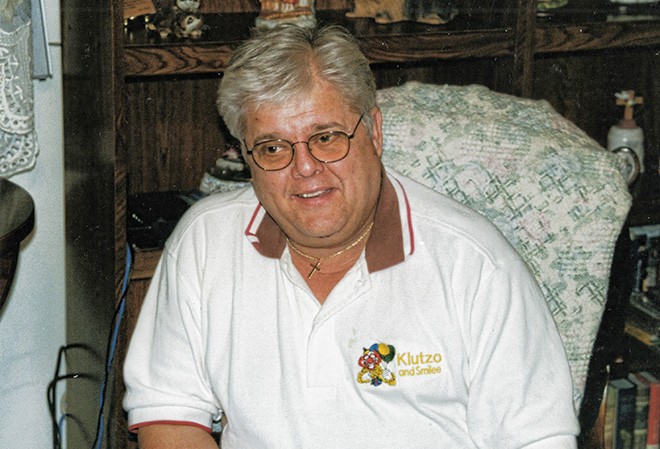
Charged with possession of child pornography and traveling abroad to molest kids, Carlock, who died 39 days after he was booked into the county lockup, was accused of terrible things but died pending trial, and so was an innocent man in the eyes of the law.
Whether guards and jail doctors are also innocent remains an unanswered question in a lawsuit against Sangamon County and physicians who held contracts to care for inmates.
The claim against the county is essentially twofold: One, Carlock didn’t receive proper medical care and, two, excessive force used by jailers compromised an already ill man to the point that he died. The county says that jailers did nothing wrong, but even if they did, Carlock brought it on himself.
“Defendants do not concede mistakes were made, but if mistakes were made in the application of force, the mistakes were reasonable given Carlock’s conduct,” attorneys for the county wrote in an unsuccessful bid to get the case dismissed.
The county’s legal tab already stands at more than $2.3 million, with litigation costs sapping the county’s insurance fund to the point that the county board last month voted to borrow $8.5 million to refill the pot out of which county taxpayers pay lawyers, verdicts and settlements when someone sues.
The county could end up spending a fair chunk of that replenished fund on the Carlock case. It is already, by far, the most the county has paid to defend a lawsuit, and not even a trial date set.
But there may not be a trial.
U.S. District Court Judge Sue Myerscough last week ordered the parties to a settlement conference set for Friday.
“Persons with full authority to settle shall be present at the settlement conference,” the judge decreed in her ruling issued Oct. 3.
In the same ruling, Myerscough denied county motions to dismiss the lawsuit while underscoring weaknesses in the county’s case.
The parties have already tried mediation and weren’t prepared for the judge’s order to try again.
“We were not expecting it,” said Andrew Ramage, an attorney for the county who is working under contract. “That was an order of the court, and, of course, we will follow the judge’s order and appear in good faith at the settlement conference. … It’s impossible to predict if the case will settle. That depends on a variety of factors, not the least of which is, how much money the plaintiffs are asking for.”
Jon Robinson, attorney for Carlock’s estate, said he also wasn’t expecting the judge to order settlement talks. Neither side’s case is airtight, he acknowledged, but he said that his client’s case is strong and he’s optimistic.
“We were very pleased by it [Myerscough’s order],” Robinson said. “It’s unfortunate it’s gone on so long. It could have been resolved for what the two parties, collectively, have put into this.”
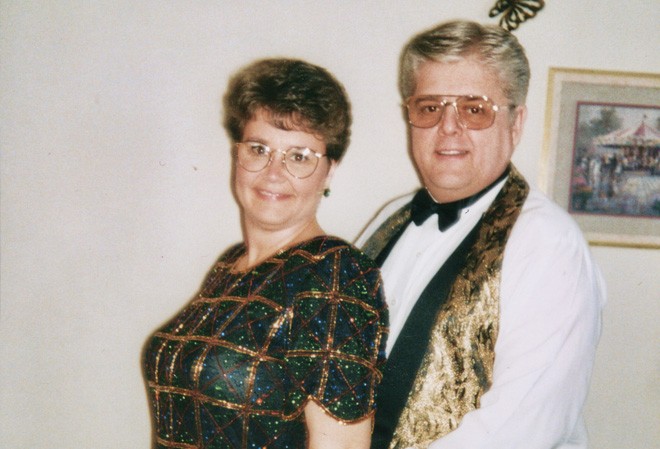
A history of health problems
Amon Paul Carlock was once a good guy so far as cops and prosecutors were concerned.
He worked at least four years as a Springfield police officer, hiring on in 1973. He also worked as an officer for the Grandview Police Department and as a trainer and counselor with the state Department of Corrections. He had a fondness for children, was a volunteer with Big Brothers/Big Sisters and performed as Klutzo the Clown in shows for kids.
His problems with the law began in June 2007 when he returned home from a trip to the Philippines and was questioned by Immigration and Customs Enforcement agents at the San Francisco International Airport.
The federal agents found more than 60 images of naked boys on Carlock’s laptop and camera, according to court documents filed by attorneys for the county. Carlock was allowed to return to Springfield, where federal agents served a search warrant at his home on Sept. 28, 2007.
While agents were finding evidence of child pornography at his house, Carlock grew lethargic and was rushed to St. John’s Hospital. He was unresponsive on arrival, and he committed himself to the hospital’s psychiatric unit the next day. He already had a history of mental and physical problems.
In 2004, Carlock had been diagnosed with depression and hospitalized after becoming suicidal. He was diagnosed with diabetes long before that and needed insulin on a daily basis. Shortly before the search of his home, he displayed “cutting behavior,” suicidal thoughts and concerns that his wife would divorce him, according to court documents.
Marital fears became reality five days after the search of his home when Carlock’s wife filed for divorce. Carlock broke a plastic spoon and swallowed it in an attempt to kill himself. Four days later, he was taken from the hospital to jail.
“He arrived at the Sangamon County Jail in stable medical condition and psychiatric health indicating that his conditions were manageable,” attorneys for Carlock’s estate write in court documents.
That soon changed.
Upon arrival at the jail, the staff didn’t check Carlock’s blood sugar, nor did he promptly receive his prescribed medication that first day, according to the plaintiffs. Papers from the hospital included a list of medications as well as notice that Carlock had been diagnosed with depression and was at risk of suicide.
Dr. Joseph Maurer of Springfield, a private practice physician who cared for inmates under a contract with the county, examined Carlock the day after he arrived at the jail, where a prescription for Klonopin, a drug used to treat anxiety, was discontinued and a prescription for Buspar, also an anti-anxiety drug, was reduced. The jail health staff also cut off a prescription for a fast-acting form of insulin, although the jail was supposed to provide other forms of insulin and regularly check Carlock’s blood sugar levels. Carlock was also prescribed lithium, a psychotropic drug, for his mental issues.
On Oct. 17, eight days after he became an inmate, Carlock appeared before U.S. Magistrate Byron Cudmore and expressed no complaints save for stomach problems. Nonetheless, Cudmore, aware of problems with the defendant’s mental and physical health, ordered the jail staff to pay attention to Carlock’s health.
Carlock died one month later.
What happened to Carlock and why is in dispute but at least one health issue was obvious: He lost nearly 30 pounds during his stay in the jail, nearly one pound a day.
“This is a dramatic and dangerous drop which would have alarmed any reasonably competent physician,” wrote Dr. Marc Stern, a physician hired by the plaintiffs, in a critical report on Carlock’s care while in the jail.
But neither Maurer nor jail nurses were particularly concerned by the weight loss, judging from jail records and depositions taken in the lawsuit. A nurse noted that Carlock was overweight when he arrived at the jail, so his weight loss wasn’t necessarily a significant issue.
Carlock refused to eat and missed at least one-third of his meals. He also missed one-third of his prescribed medication, notably insulin, either because he refused drugs or because nurses decided that he shouldn’t be given medication. On the morning of his death, for example, insulin was withheld because Carlock hadn’t eaten breakfast or supper the night before.
Carlock was certainly a handful. One week after he arrived in the jail, guards stunned him with a Taser when he began yelling and screaming on his cell door and refused to stop. Less than 10 hours later, he started banging on his cell door again, prompting a struggle with guards who tased him three times as they fought to get him in a restraint chair. Carlock managed to grab a pepper canister from a guard’s belt and discharge it during the melee, the county says.
Carlock sometimes couldn’t think clearly. He once had trouble figuring out how to get water from a sink. When he first saw a psychiatrist two weeks after he arrived in jail, he had no memory of his stay at St. John’s Hospital or how he had arrived in the jail. He also told Dr. Chauncey Maher III, the psychiatrist, that he had no health problems.
Carlock was first housed in a high-risk area of the jail where guards checked on him every 15 minutes. One week after the first visit, Maher again saw Carlock and, while he was concerned about erratic behavior, skipped meals and missed medications, the psychiatrist saw some improvement. At that point, Carlock had lost 18 pounds after three weeks in jail.
Carlock was moved from the jail’s high-risk area to general population shortly afterward, but he was moved back two days later when a guard found him crying in his cell.
Five days later, Carlock again saw Maher and told the psychiatrist that he was an American Indian and had just gotten married. Maher made no diagnosis but ordered Carlock kept in the jail’s high-risk area.
Eight days after he told the psychiatrist that he was a newly wed Indian, Carlock was dirty, trembling, disheveled and wearing feces-stained clothing when he was again seen by Maurer. But Stern, the physician retained by the plaintiff, says that the doctor responsible for Carlock’s physical health did nothing to help.
Maurer weighed Carlock, Stern found, but didn’t check his blood pressure, pulse, breathing rate or temperature. An examination by Maurer two weeks earlier was similarly cursory, according to Stern, who says in his report that Carlock belonged in an infirmary, not a jail cell.
“On both occasions, Dr. Maurer failed to obtain a scintilla of information from the patient,” wrote Stern, who was in charge of health care for the Washington state prison system from 2002 until 2008. “(T)here is no evidence Dr. Maurer asked Mr. Carlock a single question (such as ‘How are you?’) or even spoke a word to him.”
Carlock’s strange behavior, which prompted guards to tase him and force him into restraint chairs, was the product of serious illness that wasn’t properly treated, the plaintiffs say. That Carlock was dreadfully ill became clear on Nov. 15, 2007, one day after Maurer’s last examination and one day before Carlock died.
Blood tests taken that day showed that Carlock was in renal and liver failure, with high levels of potassium and creatinine in his system. His level of blood urea nitrogen (BUN) was 99; the normal range is between 7 and 27. The BUN level, which rises as kidneys fail, was 140 the next day, and it could have been higher, given that labs don’t measure past 140. And so Carlock was, quite literally, off the charts. The emergency room physician who tried to save his life said that a person who had both kidneys removed would not have a BUN level of 140 the next day.
Stern says that Carlock deteriorated mentally due to poor health care and, as his faculties diminished, he was less likely to eat, drink and take medications. Ultimately, Stern says, Carlock became dehydrated, which brought on kidney failure that resulted in even further mental deterioration as impurities built up in his blood.
Stern says that Maurer should have acted immediately once the results of blood tests came in. Even the county acknowledges that abnormalities in Carlock’s blood were critical and, left untreated, would prove fatal. Told of blood test results on the evening of Nov. 15, 2007, Maurer said he would address the situation in the morning.
Carlock, who was in restraints even as the jail awaited results of blood tests, was pronounced dead before 9 a.m. the next day.
The final struggle
Carlock’s last day began with a trip to see Lucy Ramsey, a licensed practical nurse who was employed by the jail. He was in handcuffs and walking under his own power that morning, the county says.
“Good morning, Lucy,” he told Ramsey, according to the lawyers for the county.
Lawyers for the plaintiff say that Carlock by that point was too ill to walk without help from guards who helped him keep his balance. But both sides agree that something wasn’t right.
Ramsey called Maurer and reported that Carlock was bumping into objects, according to Stern, who reviewed medical records and depositions in the case. Maurer ordered Carlock taken to a hospital.
Carlock was standing in the middle of his cell when guards arrived to take him to St. John’s via a squad car. He was talking and acting in a strange way, and his shirt was under a toilet, according to the county. He refused orders to put on a new shirt, so a lieutenant summoned Ramsey to help.
The parties disagree about whether Carlock resisted guards at this point and, if he did, to what degree.
The county says that Carlock, ordered to put on a shirt, fought to the point that several guards were needed to subdue him. He kicked a guard in the groin and threatened Ramsey with a fist while yelling and screaming and bouncing around his cell, county attorneys write in court documents. When guards got a restraint chair, Carlock went to the ground and defecated on himself. A Taser jolt to Carlock’s thigh proved no help. Finally, Kevin Furlong, a guard, laid across Carlock’s shoulders.
“Come on, Paul, I don’t want to have to sit on you, stop fighting with us,” Furlong told Carlock, according to court documents.
Furlong’s precise weight is in dispute, but he was between 275 and 300 pounds, according to court documents. Carlock was face down.
Myerscough last week wrote that guards should have known that putting weight on a prone person is risky.
“The law governing excessive force claims was clearly established on Nov. 16, 2007, that compressing the lungs of an obviously vulnerable person might kill him,” the judge wrote.
Even Furlong wasn’t sure that he was doing the right thing. At some point, he asked Lt. Ron Beckner, third in command at the jail, whether it was OK to put his weight on Carlock.
“Beckner told him it was fine,” attorneys for the county write in court documents.
A few seconds later, Carlock stopped struggling, county attorneys say, and Furlong got up. Just how long he had his weight on Carlock isn’t clear. Furlong estimates that he was on Carlock for between one and three minutes; another guard, however, says that it could have been five minutes.
Someone noticed that there was blood on Carlock’s feet, so Ramsey began cleaning them. Then someone said that Carlock wasn’t breathing.
Ramsey checked Carlock’s ankle for a pulse. Nothing. She checked his wrist. Nothing. Finally, Ramsey checked his neck and detected a weak pulse in his carotid artery.
While Ramsey was checking for a pulse, Todd Guy, the guard who had tased Carlock’s thigh, put an ammonia capsule under the inmate’s nose. Nothing. Guy says that he put his hand on Carlock’s chest and felt it rise, then fall. Carlock’s face was gray.
A lieutenant called the ambulance company and told them to hurry up.
The plaintiffs say that 10 minutes elapsed without anyone monitoring Carlock’s vital signs before paramedics arrived, found him flat-lined with no respiration or pulse and immediately started CPR. No one at the jail had administered CPR or applied an automatic defibrillator while waiting for the ambulance.
Carlock stopped breathing and his heart stopped beating precisely when paramedics arrived, the county argues, and it isn’t appropriate to administer CPR to someone who has a pulse. Likewise, the county says, a defibrillator would not have helped.
But Stern says that someone should have administered CPR and rescue breathing as well as defibrillation. At the very least, the doctor says, the nurse should have provided oxygen.
“The failure of the custody officer and nurse to take appropriate action during this episode more likely than not left Mr. Carlock deprived of oxygen to his heart and brain for a critical period of time contributing to his death,” Stern wrote.
Myerscough shared that concern in her order issued last week.
“The court is particularly concerned with Nurse Ramsey’s failure to use the defibrillator and start CPR on Carlock when, under the facts taken in the light most favorable to the Plaintiff, Carlock was not breathing and had, at best, a weak carotid pulse,” the judge wrote. “Defendant Guy (the guard) only saw Carlock take one breath, and Defendant Ramsey did not continue to monitor Carlock’s breathing.”
Carlock had 11 broken ribs and two broken front teeth when he got to St. John’s, where he was pronounced dead shortly after arrival. The pathologist who conducted the autopsy for the county said ribs were likely broken when paramedics performed CPR. Ridiculous, say the plaintiff’s attorneys, who say ribs broke beneath Furlong’s weight.
Eleven minutes after the ambulance left for the hospital, more results from blood tests taken the previous day arrived at the jail: The lab determined that Carlock, who was 57 when he died, had toxic levels of lithium in his system.
The cause of death has never been definitively determined. An inquest jury reached no conclusion. The physician who treated Carlock at St. John’s blamed renal failure and hyperkalemia, a condition caused by high potassium levels. The plaintiffs blame positional asphyxiation caused by Furlong sitting on Carlock. Stern said in a deposition that Carlock likely would have survived if not for his final struggle with guards; in his report, Stern writes that he might have died from the use of force alone, or he might have died from kidney failure combined with lithium poisoning. A pathologist retained by the plaintiffs said it was an erratic heartbeat. A doctor retained by the county called it a heart attack.
The plaintiffs paint a chicken-or-egg case: If Carlock had received proper health care in jail, he would not have engaged in bizarre behavior that prompted jailers to use force that caused his death. And so, the plaintiffs say, guards, nurses, jail administrators and doctors must share the blame while taxpayers foot the bill. A trial, if there is one, isn’t expected until sometime next summer.
Contact Bruce Rushton at [email protected].

